 Who is the blogger?
Who is the blogger?
To see a simple English version of reviews about some of the movies, click on the ESL section of Midnight Oil.
White Heat (1949) and The Day the Earth Stood Still (1951)
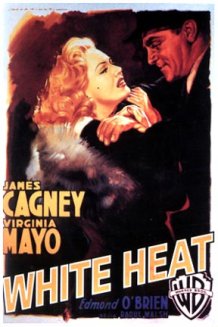 In "White Heat", Jimmy Cagney shows us the 1949 version of good old-fashioned gangster movie violence to good advantage. The ultimate "tough guy" is not too tough to watch for those of us with queasy stomachs, unlike Scorsese's "Good Fellas".
In "White Heat", Jimmy Cagney shows us the 1949 version of good old-fashioned gangster movie violence to good advantage. The ultimate "tough guy" is not too tough to watch for those of us with queasy stomachs, unlike Scorsese's "Good Fellas".
See the full review here.
"Blade Runner" was a film before its time. With a strange blend of escalating horror and empathy, the movie provides unexpected insights into eternity. "The Day the Earth Stood Still", meanwhile , tells us quite a bit about the atmosphere on earth in post-war America, circa 1951.
See the full review here.
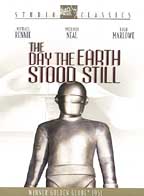
The Grifters (1990) Dirty Rotten Scoundrels (1988)
Who's Conning Who?
 Steve Martin and Michael Cain are fun and frothy in this comic look at the con game (Dirty Rotten Scoundrels). The Huston/Cusack/Bening trio in The Grifters tells us something quite different about the seamier side of the life of a con artist. It's not all fun and games.
Steve Martin and Michael Cain are fun and frothy in this comic look at the con game (Dirty Rotten Scoundrels). The Huston/Cusack/Bening trio in The Grifters tells us something quite different about the seamier side of the life of a con artist. It's not all fun and games.
See the full review here.
Rebel Without a Cause (1956)
"Live Fast, Die Young"
(attributed to Jimmy Dean)
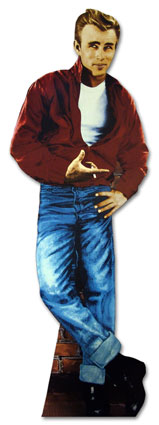
Suggested Reading:
Chrisitan Hosoi : from pro skateboarding champion, to crystal meth, to prison, to freedom (video)
Jesse James (1939), The Long Riders (1980)
Rebs
Jesse James was the stuff of legends. So was Jimmy Dean. Folk legend and screen legend, the legacy lives on.
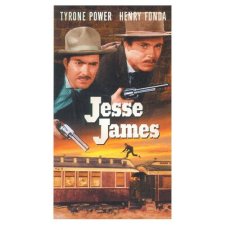 It got under my skin like shrapnel from those little bullets. The historically accurate bullets I mean; not the Darryl Zanuck Technicolor spectacular version of Jesse James that SNAM’s Johanna Schneller mentions, but the other one – The Long Riders – with that dangblasted little guitar/mandolin theme that keeps trotting through the entire film.
It got under my skin like shrapnel from those little bullets. The historically accurate bullets I mean; not the Darryl Zanuck Technicolor spectacular version of Jesse James that SNAM’s Johanna Schneller mentions, but the other one – The Long Riders – with that dangblasted little guitar/mandolin theme that keeps trotting through the entire film.
I think I first saw The Long Riders in snatches as I passed by the t.v. on my way to doing other things. It was too gritty for my taste. I think that I remember being transfixed watching one of those slo-mo scenes unfold with lots of flesh flying and gut-wrenching aftermath. It was not the kind of thing that makes for sweet dreams, so I think I probably turned it off. But that was the first time around.
The next time around when TVO showed the double feature about Jesse James, I was ready for it. The 1939 version was the warm up and the 1980 version was the entrée. I was able to take in The Long Riders, this time with a steady hand and a clear eye. When it came to the reruns in the summer season, there was great anticipation to really dig in to what some say is one of the most underrated of the Hollywood Westerns .
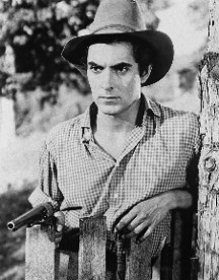 The 1939 version of Jesse James was spectacular in some ways. As Johanna Schneller said, the tone was 100% earnest, a tale about a simple farmer done wrong by the big bad railroad company. That’s not really the way it was, but it made for a good film at the time. And, my, Tyrone Power and Henry Fonda as the James brothers were so young and so handsome in those days. The only thing that I found to be more striking was the fact that they managed to wear such clean, nice looking clothes back then. Had the latest technical breakthrough in filmmaking been “smell-o-vision” instead of Technicolor, I imagine that the outlaws would have ended up smelling like a rose much of the time and not just looking like one.
The 1939 version of Jesse James was spectacular in some ways. As Johanna Schneller said, the tone was 100% earnest, a tale about a simple farmer done wrong by the big bad railroad company. That’s not really the way it was, but it made for a good film at the time. And, my, Tyrone Power and Henry Fonda as the James brothers were so young and so handsome in those days. The only thing that I found to be more striking was the fact that they managed to wear such clean, nice looking clothes back then. Had the latest technical breakthrough in filmmaking been “smell-o-vision” instead of Technicolor, I imagine that the outlaws would have ended up smelling like a rose much of the time and not just looking like one.
No such nicety existed as part of the vision of the Keach brothers’ with The Long Riders. As James Keach points out in the Interviews, realism in the film means a dog doing his business in the street on camera and bullets that tear you up pretty good, even if they don’t always kill you straight away. Had they had “smell –o- vision” during this film to go along with the rumpled, unshaven look, I imagine they would have captured, er, other wonderful smell sensations that just naturally went along with life in the wild mid-West during that era.
 The earlier version of Jesse James seems to capitalize on the popular image of the historical figure of Jesse James as a modern-day Robin Hood. Major Rufus Cobb, the local newspaper editor, elegizes Jesse in the final memorial scene as “ an outlaw, no doubt about it, but we ain’t ashamed of it.” The reasons offered by the Major for why America has a place in its heart for Jesse James sound pretty good in 1939 and even today: “Maybe it’s because he was good at what he did. Maybe it’s because he was bold and lawless. Maybe it’s because he stood up and licked the tar out of 5 states for 10 years. Maybe we can understand that Jesse was what his times had made him.”
The earlier version of Jesse James seems to capitalize on the popular image of the historical figure of Jesse James as a modern-day Robin Hood. Major Rufus Cobb, the local newspaper editor, elegizes Jesse in the final memorial scene as “ an outlaw, no doubt about it, but we ain’t ashamed of it.” The reasons offered by the Major for why America has a place in its heart for Jesse James sound pretty good in 1939 and even today: “Maybe it’s because he was good at what he did. Maybe it’s because he was bold and lawless. Maybe it’s because he stood up and licked the tar out of 5 states for 10 years. Maybe we can understand that Jesse was what his times had made him.”
The world needed heroes in 1939, heroes who would stand up to unscrupulous bullies despite the odds, engaging in guerrilla warfare, if need be, in order to keep the world safe and free from oppression and injustice. At the beginning of World War II, Jesse James was an obvious choice of an American legend to be resurrected.
In the early 1939 version, Bob Ford, propelled by the offer of a reward, is the craven coward who shoots the unarmed Jesse in the back at the very moment when Jesse is on the cusp of making a final break from his life of crime. By refusing Bob and Charlie’s faked invitation to join his brother Frank in a new robbery scheme, Jesse occupies the moral high ground. Nothing is holding him back from an escape to a fresh start in California with his wife and child. At the crucial moment of the shooting, Jesse stands on a chair symbolically taking down from the wall a home-crafted sampler lovingly stitched together by his wife Zee: “Bless this home.” It’s a real tearjerker. Hopes for a happy home and a normal life for Jesse James are cruelly crushed by an assassin’s bullet. This film version of the life and times of Jesse James continues the process of the immortalization of the popular legend of James as the underdog bandit outlaw.
 But things were simpler then. As Major Rufus claims, “All I know is that Jesse was the doggoenedest, dangblingdest, galldingdest buckaroo that ever rode across these United States of America !” And that was all you needed to know in them days, I guess!
But things were simpler then. As Major Rufus claims, “All I know is that Jesse was the doggoenedest, dangblingdest, galldingdest buckaroo that ever rode across these United States of America !” And that was all you needed to know in them days, I guess!
The Long Riders gives us a less romantic interpretation of the events of history. The complexity of the aftermath of the Civil War as it ripped apart the social fabric and the personal lives of individuals of the state of Missouri is more evident in this film. In the 1939 version of Jesse James, personal revenge for injustices done to individuals seems to be a believable and sufficient motivating force for the action. The Long Riders does a better job of capturing the grim and unrelenting conflict that embroiled individuals who were Union and Confederate sympathizers during this period in the mid-West. There is clearly a convoluted historical context that informs this telling of the story.
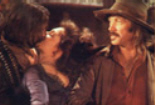 For a story that was ostensibly about a lot of hootin’ and hollerin’ while robbing banks and holding up trains and stage coaches, I found that there was an amazing amount of concentration on the domestic situations of the gang members. Cole Younger has an interesting ongoing relationship with a lady of the night, Belle Starr. Jim Younger shows interest in marrying Beth, but never quite gets around to it before he ends up in jail with a life sentence. Beth Mimms is presumably related to Zee Mimms, who is herself a first cousin of the James boys. Zee ends up marrying Jesse after a prolonged 9 year courtship. Cousin John Younger is wrongfully shot by a Pinkerton man (although in history John was actually a brother to Cole, Jim and Bob). Since John was not involved with the gang’s criminal activities, the incident violates the code of honour of these folk as does the inadvertent slaying of Jesse and Frank’s half-witted half brother, Archie. What ensues amounts to a blood feud.
For a story that was ostensibly about a lot of hootin’ and hollerin’ while robbing banks and holding up trains and stage coaches, I found that there was an amazing amount of concentration on the domestic situations of the gang members. Cole Younger has an interesting ongoing relationship with a lady of the night, Belle Starr. Jim Younger shows interest in marrying Beth, but never quite gets around to it before he ends up in jail with a life sentence. Beth Mimms is presumably related to Zee Mimms, who is herself a first cousin of the James boys. Zee ends up marrying Jesse after a prolonged 9 year courtship. Cousin John Younger is wrongfully shot by a Pinkerton man (although in history John was actually a brother to Cole, Jim and Bob). Since John was not involved with the gang’s criminal activities, the incident violates the code of honour of these folk as does the inadvertent slaying of Jesse and Frank’s half-witted half brother, Archie. What ensues amounts to a blood feud.
 The depiction of the clannishness of the community and its relationship to the tacit community endorsement of the outlaws’ activities is indeed interesting and probably historically accurate. After the disastrous failed robbery in Northfield , Minnesota, the incarcerated Bob Younger is asked by a reporter about why he got involved with the gang when he knew it would lead to such a tragic ending. Bob says, “They’re my brothers. Whichever way the Younger boys go, we all go together.” This comment is followed a little later by Bob Younger trying to protect the identity of the James brothers by defiantly saying, “We did it for Dixie !” Bob is unwilling to betray Jesse and Frank even though they left him behind after the robbery.
The depiction of the clannishness of the community and its relationship to the tacit community endorsement of the outlaws’ activities is indeed interesting and probably historically accurate. After the disastrous failed robbery in Northfield , Minnesota, the incarcerated Bob Younger is asked by a reporter about why he got involved with the gang when he knew it would lead to such a tragic ending. Bob says, “They’re my brothers. Whichever way the Younger boys go, we all go together.” This comment is followed a little later by Bob Younger trying to protect the identity of the James brothers by defiantly saying, “We did it for Dixie !” Bob is unwilling to betray Jesse and Frank even though they left him behind after the robbery.
The scenes of the Northfield fiasco stick in one’s memory. The picture of Cole doubling back into the mayhem to pick up his badly wounded brother on his horse is etched into one’s mind. The slo-mo action and weird sound distortions imitating the whinnying of a panicky horse capture forever the physical and emotional agony of the moment. It all goes to show that it’s incredibly hard to forget the ties that bind.
Ties of family, friendship and fealty are not represented here as altogether positive values. The picture we get in this version has a more dappled hue than in 1939. In the Long Riders, at one point Cole Younger says about Jesse’s marriage to Zee, “It don’t go with the way he’s livin’.” Frank retorts, “He’ll be fine.” The life of an outlaw might not go very well with marriage and family life, but it did happen in reality. Both films, in their own ways, try to grapple with this essential contradiction in terms. The hand-stitched sampler “God bless this home” is shot out of Jesse James’ hands by a betrayer in both movies. Normal life, peace and happiness are just out of reach.
It seems that in history as in the movie, Frank was somewhat more successful in living out the double life of a peaceable private citizen than Jesse. In an odd little scene with a prostitute just before the Northfield incident, Frank explains it like this: “I used to do this all the time. But a few years back I got married. Slowed me down a bit.” Outside the whorehouse Cole makes a joke about Jesse being “a family man” now. Jesse gives him a withering look and spits, “My family is something you don’t talk about!”
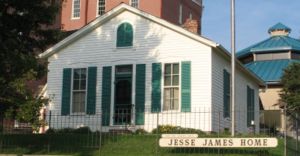 Jesse seems to want both: robbing banks and a decent family life . For a while there is an uneasy truce between these two sides of his life. The truce ends tragically in a tidy family residence in St. Joseph , Missourri. In real life, Jesse and Zee had four children, two of whom died in infancy. After Jesse’s death at age 35, his widow, Zee died sometime after, alone and in poverty. The son of a Baptist minister and prosperous farmer, it seems that Jesse never got the hankering for something more than life on the run out of his blood.
Jesse seems to want both: robbing banks and a decent family life . For a while there is an uneasy truce between these two sides of his life. The truce ends tragically in a tidy family residence in St. Joseph , Missourri. In real life, Jesse and Zee had four children, two of whom died in infancy. After Jesse’s death at age 35, his widow, Zee died sometime after, alone and in poverty. The son of a Baptist minister and prosperous farmer, it seems that Jesse never got the hankering for something more than life on the run out of his blood.
Thanks in part to Hollywood , Jesse James, the legend, lives on in America ’s imagination. Bigger and bolder than real life, Hollywood both takes a legend and makes a legend and employs it for its own ends. It’s really quite entertaining, no matter where the truth lies about Jesse James and his gang.
And as for Jimmy Dean, Rebel without a Cause, and the Hollywood legend-making machine, I’ll have to save that one for another day. Rebel was interesting enough, but the flick that I found to be unexpectedly powerful was September 30, 1955 , with Richard Thomas, shown on SNAM on a previous occasion.
Suggested Reading:
- A horse fell to its death over a cliff during the 1939 film. The case was cited by the American Humane Association and led eventually to the monitoring of filmmaking.
- Jim Younger never married Beth. After 25 years in prison he was paroled. He committed suicide the year after apparently because his parole disallowed marriage to another woman to whom he had become engaged while in prison.
- After prison, Cole Younger did write a memoir where portrayed himself as a Confederate avenger more than an outlaw, admitting to only one crime, that at Northfield. At the end of his life, Cole claimed to have become a Christian in his later years and renounced his criminal past.
- Surviving civil war: a story of hope from Rwanda
- On domestic bliss: “Say, where do I get me one of them thar things, a good marriage?”
The Yearling (1946) and Cross Creek (1983)
Marjorie Kinnan Rawlings
 This week on TVOnario's SNAM two films connected with author Marjorie Kinnan Rawlings were shown. The first feature, "The Yearling" was originally a Pulitzer prize winner. The second movie, "Cross Creek", is the life story of Mizz Rawlings as she makes a strategic move to the Florida Everglades in the 1920s in order to pursue her writing career.
This week on TVOnario's SNAM two films connected with author Marjorie Kinnan Rawlings were shown. The first feature, "The Yearling" was originally a Pulitzer prize winner. The second movie, "Cross Creek", is the life story of Mizz Rawlings as she makes a strategic move to the Florida Everglades in the 1920s in order to pursue her writing career.
Both films have a strong sense of time and place. 
Read the full review.



